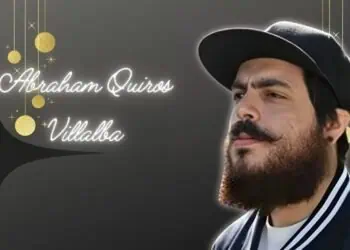Unveiling the Dadiyanki Rituals
The Dadiyanki rituals are ancient practices that have been passed down through generations, shrouded in mystery and steeped in tradition. Let’s delve into the origins, history, and significance of these captivating rituals.
Origins and History of Dadiyanki Rituals
The word “Dadiyanki” is derived from the ancient language of the Eknar people, meaning “soul awakening.” These rituals have their roots in the sacred beliefs and customs of the Eknar tribe, an ancient civilization that thrived in the remote mountains of what is now known as Eknarland.
The exact origins of the Dadiyanki rituals are difficult to trace due to their ancient nature and limited historical documentation. However, anthropologists and cultural historians believe that these rituals have been practiced for thousands of years, passed down from one generation to the next through oral traditions and sacred texts.
The Dadiyanki rituals were initially developed as a means for individuals to connect with their inner selves and awaken their spiritual consciousness. The Eknar people believed that by performing these rituals, they could tap into the divine energies of the universe and achieve a state of enlightenment.
Significance and Purpose of Dadiyanki Rituals
The Dadiyanki rituals hold immense significance for those who practice them. They are seen as a sacred journey of self-discovery, allowing individuals to explore their innermost depths and uncover their true potential. These rituals are believed to cleanse the soul, purify the mind, and restore spiritual harmony.
The primary purpose of the Dadiyanki rituals is to awaken the dormant energies within oneself and cultivate a deeper connection with the divine forces of the universe. Through various practices such as meditation, chanting, and intricate ceremonial acts, participants seek to align their mind, body, and spirit, transcending the boundaries of the physical world.
Moreover, the Dadiyanki rituals serve as a means of communal bonding and cultural preservation. They bring people together, fostering a sense of unity and shared cultural identity. The rituals are often performed during significant life events, such as weddings, births, and harvest festivals, to invoke blessings and ensure prosperity.
As we explore the Dadiyanki rituals further, we will uncover the traditional elements that make up these ancient practices, as well as the modern adaptations and interpretations that have emerged over time. The rich tapestry of the Dadiyanki rituals continues to captivate and inspire individuals on their spiritual journeys.
Diving into the Practices
Once you are acquainted with the origins and significance of Dadiyanki rituals, it’s time to explore the practices associated with this ancient tradition. These practices encompass both traditional elements and modern adaptations that have evolved over time.
Traditional Elements of Dadiyanki Rituals
Traditional Dadiyanki rituals are deeply rooted in age-old customs and beliefs. They involve a series of sacred practices performed with reverence and devotion. These rituals often vary based on specific regions and communities, but they share common elements that make them distinct.
One integral aspect of Dadiyanki rituals is the use of natural elements. These can include flowers, leaves, fruits, and other organic materials that are carefully selected for their symbolic meaning. These elements are incorporated into various rituals, symbolizing purity, abundance, and spiritual connection.
Another traditional element is the chanting of mantras and hymns. These sacred verses hold significant spiritual power and are recited during the rituals to invoke blessings and positive energy. The vibrations created by the chanting are believed to purify the environment and uplift the participants’ souls.
Rituals involving fire, such as the lighting of lamps or the performance of havans (fire ceremonies), are also common in Dadiyanki traditions. Fire is considered a sacred element that represents transformation, purification, and the connection between the physical and spiritual realms.
Modern Adaptations and Interpretations
As time progresses, the practices associated with Dadiyanki rituals have evolved to suit the changing cultural and societal landscape. Modern adaptations and interpretations have emerged, allowing individuals to connect with the essence of these rituals in contemporary ways.
One notable modern adaptation is the integration of technology. With the advent of live streaming and virtual events, Dadiyanki rituals can now be experienced by a wider audience. People from different geographical locations can participate in these rituals remotely, fostering a sense of unity and inclusivity.
Additionally, there has been an increased emphasis on personalization and individual interpretation of Dadiyanki rituals. People now have the freedom to incorporate their own beliefs and spiritual practices into the traditional framework. This allows for a more personalized and meaningful experience that resonates with the individual’s unique spiritual journey.
Furthermore, contemporary Dadiyanki rituals often incorporate elements of environmental sustainability and social responsibility. Emphasis is placed on using eco-friendly materials, promoting fair trade practices, and giving back to the community. This integration of ethical values adds depth and relevance to the rituals in the modern context.
As Dadiyanki rituals continue to evolve, their essence remains rooted in the ancient traditions and beliefs that have been passed down through generations. Whether adhering to traditional elements or embracing modern adaptations, these rituals provide individuals with a profound spiritual experience and an opportunity to connect with their inner selves and the divine.
By exploring both the traditional elements and modern interpretations of Dadiyanki rituals, individuals can find a deeper understanding and appreciation for this ancient practice. Each person’s journey with Dadiyanki rituals is unique, and it is through this exploration that one can ignite their soul and experience the transformative power of this timeless tradition.








